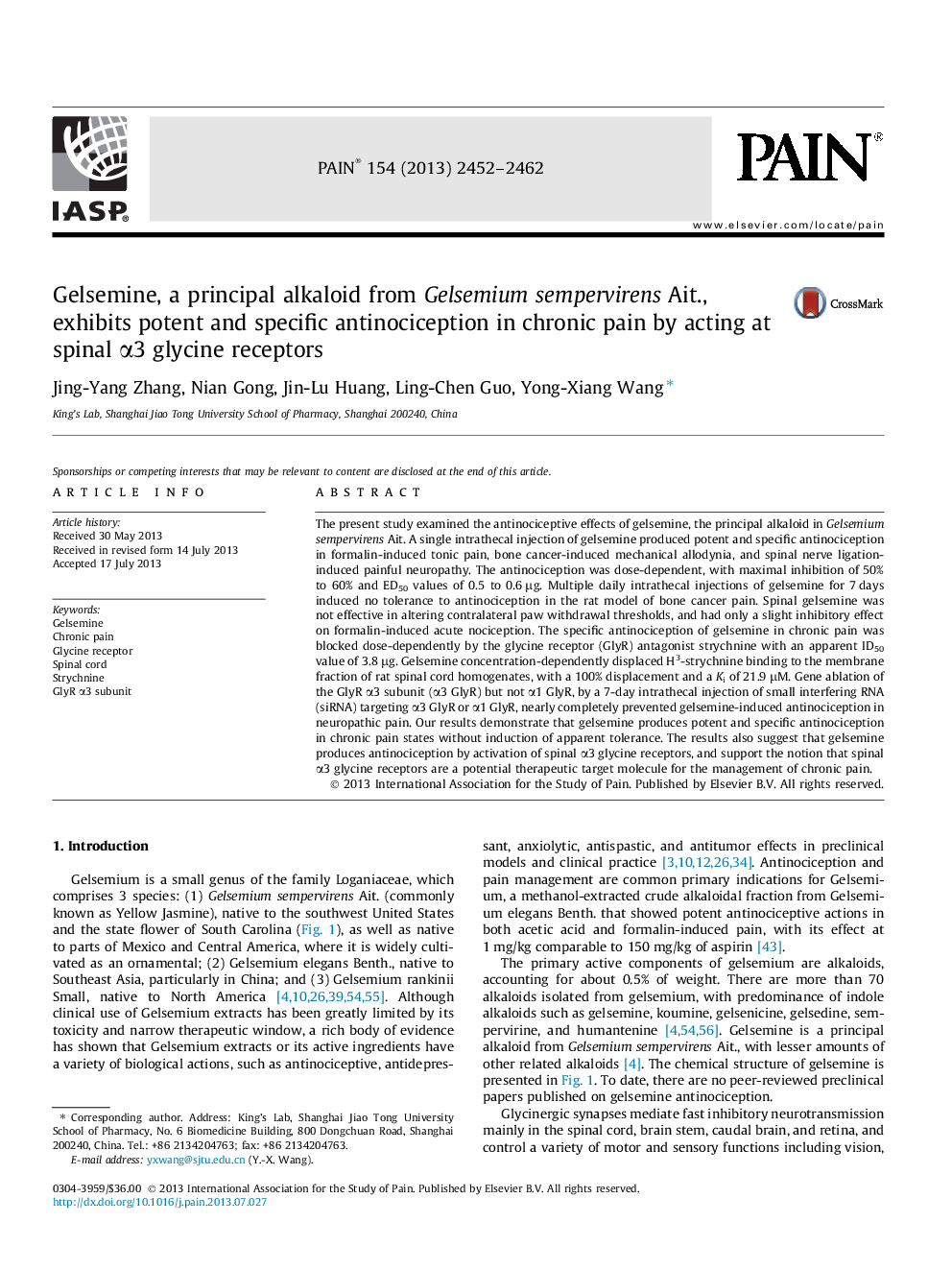| کد مقاله | کد نشریه | سال انتشار | مقاله انگلیسی | نسخه تمام متن |
|---|---|---|---|---|
| 913765 | 918351 | 2013 | 11 صفحه PDF | دانلود رایگان |
عنوان انگلیسی مقاله ISI
Gelsemine, a principal alkaloid from Gelsemium sempervirens Ait., exhibits potent and specific antinociception in chronic pain by acting at spinal α3 glycine receptors
دانلود مقاله + سفارش ترجمه
دانلود مقاله ISI انگلیسی
رایگان برای ایرانیان
کلمات کلیدی
موضوعات مرتبط
علوم زیستی و بیوفناوری
علم عصب شناسی
علوم اعصاب سلولی و مولکولی
پیش نمایش صفحه اول مقاله

چکیده انگلیسی
The present study examined the antinociceptive effects of gelsemine, the principal alkaloid in Gelsemium sempervirens Ait. A single intrathecal injection of gelsemine produced potent and specific antinociception in formalin-induced tonic pain, bone cancer-induced mechanical allodynia, and spinal nerve ligation-induced painful neuropathy. The antinociception was dose-dependent, with maximal inhibition of 50% to 60% and ED50 values of 0.5 to 0.6 μg. Multiple daily intrathecal injections of gelsemine for 7 days induced no tolerance to antinociception in the rat model of bone cancer pain. Spinal gelsemine was not effective in altering contralateral paw withdrawal thresholds, and had only a slight inhibitory effect on formalin-induced acute nociception. The specific antinociception of gelsemine in chronic pain was blocked dose-dependently by the glycine receptor (GlyR) antagonist strychnine with an apparent ID50 value of 3.8 μg. Gelsemine concentration-dependently displaced H3-strychnine binding to the membrane fraction of rat spinal cord homogenates, with a 100% displacement and a Ki of 21.9 μM. Gene ablation of the GlyR α3 subunit (α3 GlyR) but not α1 GlyR, by a 7-day intrathecal injection of small interfering RNA (siRNA) targeting α3 GlyR or α1 GlyR, nearly completely prevented gelsemine-induced antinociception in neuropathic pain. Our results demonstrate that gelsemine produces potent and specific antinociception in chronic pain states without induction of apparent tolerance. The results also suggest that gelsemine produces antinociception by activation of spinal α3 glycine receptors, and support the notion that spinal α3 glycine receptors are a potential therapeutic target molecule for the management of chronic pain.
ناشر
Database: Elsevier - ScienceDirect (ساینس دایرکت)
Journal: PAIN® - Volume 154, Issue 11, November 2013, Pages 2452-2462
Journal: PAIN® - Volume 154, Issue 11, November 2013, Pages 2452-2462
نویسندگان
Jing-Yang Zhang, Nian Gong, Jin-Lu Huang, Ling-Chen Guo, Yong-Xiang Wang,